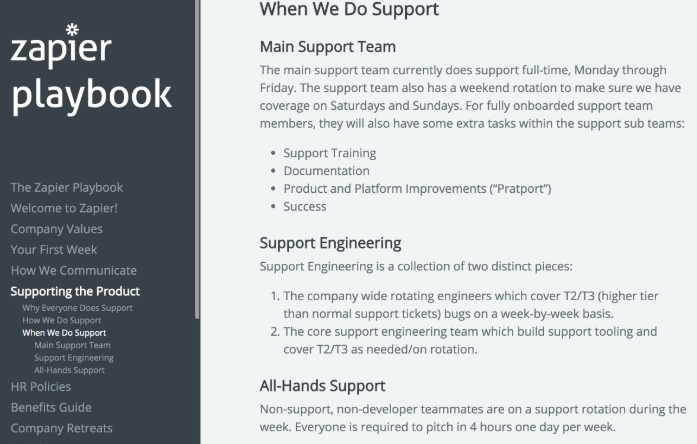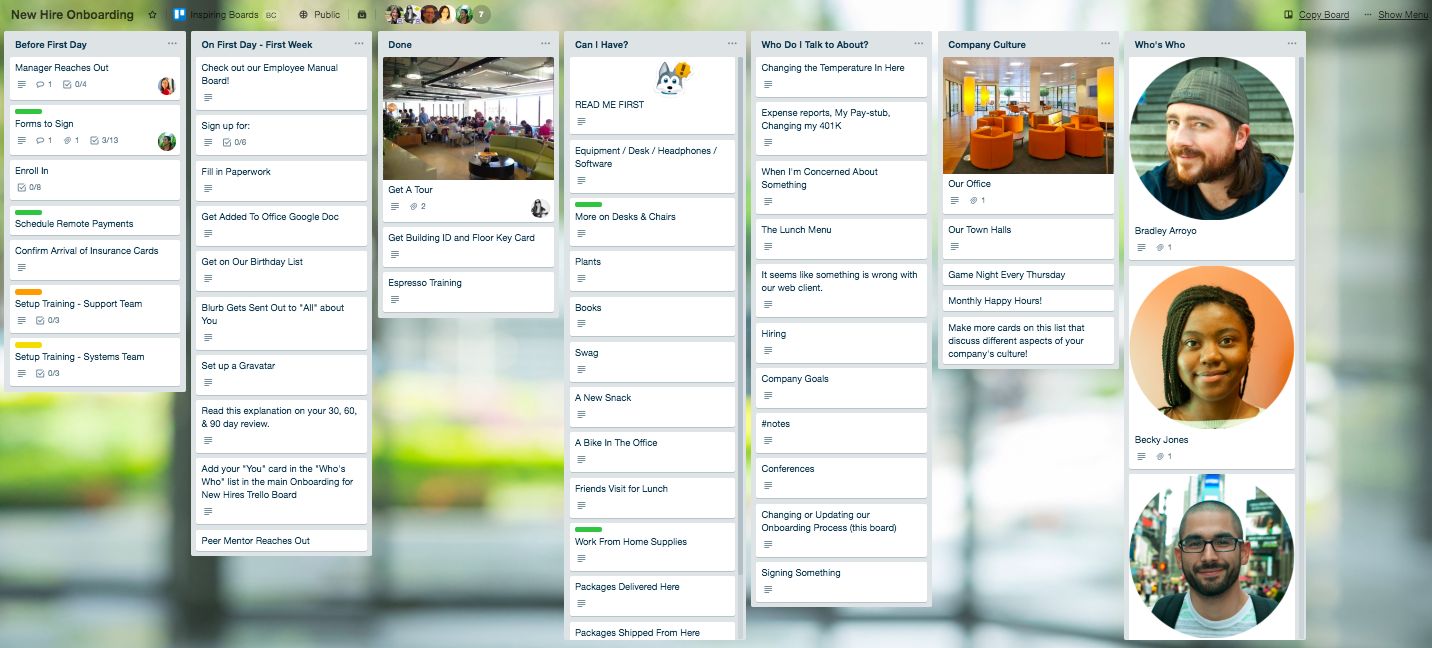Early on in my career, I commuted to a job that was more than 1.5 hours away from my home—that added up to about 15 hours a week that I was spending in a car rather than doing things I love or being with family and friends. To say that it felt like a complete waste of time would be an understatement.
It drove me crazy.
As technology has improved, working remotely has become increasingly feasible. After wasting countless hours in a car driving to and from work, I became committed to creating a work culture where people could work from home and skip the commute.
I strongly feel that remote work should become the norm!
Data supports my thoughts about remote work’s growing popularity.
In fact, one study found that once people go remote, 90 percent of them don’t want to work any other way!
It is a clear signal that the future of work is everywhere.
Thankfully a growing set of companies, both big and small, are adopting this route to hire talent and expand their positioning globally. Personally, the journey of setting up and managing a remote team has been a great learning experience for me.
In this post, I’m going to share some of the lessons I’ve learned over the last year as I’ve grown and evolved a remote team from scratch.
But before I share my experiences, let’s pause for a moment and evaluate whether remote is the way to go for your company or agency.
Going Remote: Is It The Best Bet For Your Company?
A lot of agencies like to say silly things like:
You need to get in the room and work face to face with people to come up with great ideas. It’s impossible to come up with groundbreaking ideas when you’re behind a screen.
Well … that’s nonsense.
Just ask Invision, Buffer, Basecamp, Zapier, Groove, and Foundation 😉
All of these companies are doing pretty impressive work, serving clients in different continents—and they’re doing it while being 100 percent remote. And you don’t need to think hard about finding suitable candidates. Place your job postings on Lensa, Superpath, LinkedIn and many other remote hiring websites.
Setting up and managing a remote team requires serious planning, rigorous processes and a mindset of commitment to your people. Going remote after spending years cultivating community in a physical workplace may completely reshape your organization’s culture, and if you’re not ready for that … it might be better to take baby steps.
Whether you are a small agency, a burgeoning startup or a large enterprise, here are three things you need to ask yourself before you start building a remote team:
- Are you prepared to manage from afar? Remote teams are built on a foundation of trust. If micromanaging is your communication style, going remote isn’t for you.
- Is it OK for your workforce not to be available 24/7? Ever wondered why more and more people are adopting the remote working lifestyle? It’s not just the prospect of skipping the commute, or the chance to work while vacationing in Bali. The most popular answer is a work-life balance. In a survey of remote workers, 15 percent said that spending time with family is the most significant benefit of working remotely. If you expect your team to be ALWAYS on, going remote might be a challenging shift for your company.
- Do you have time to build policies that look out for the best interests of your remote team members? Dealing with regulations that differ from one country to the next, creating processes that ensure successful collaboration across time zones—all of these things require a significant time commitment.
If you can answer YES to all three questions, you’re well on your way. The next step is to start laying the bricks of your remote work environment. Here are a few things that I’ve learned:
How To Empower A Remote Team To Do Great Work
1) Invest In A Quality Onboarding Experience
When you hire someone for a remote job, chances are you won’t meet them in person for a long time. This gets in the way of communicating culture—the new hire can’t walk around your office to get a feel for how they fit in, and you don’t get an opportunity to educate them about your culture in a face-to-face way that comes along with traditional hiring.
How you onboard remote employees is key to your company’s growth. In fact, the first few weeks with a new employee are vital for setting expectations. A good remote culture ensures that new employees have a meet and greet with their teams as soon as possible.
You want them to feel valued and welcome.
You want them to know they’ve made the right decision.
You want them to enjoy the journey.
That’s why an onboarding deck or employee handbook is critical to your onboarding process.
What does a good onboarding deck look like?
For starters, it clearly lays out your company’s culture code, processes, tools, and organizational flow. It also educates employees on what’s expected of them in their first few days.
Zapier, for example, has a pretty nifty process for onboarding its employees, including a meticulously planned employee handbook. Take a look:
The best part? Instead of bombarding new hires with all the information they need at one go, the company provides a day-by-day breakdown of the first week, making it easy for new employees to understand and execute their tasks.
Looking for quick inspiration on onboarding? Check out this board from the Trello team:
2) Create The Perfect First Day
There isn’t going to be a smiling face waiting to greet your new employees, so how do you make their first day memorable?
Here’s what you can do:
- Jump on a call. A little face time goes a long way in making a new employee feel comfortable. Their immediate supervisor or another seasoned employee can initiate the call. If you have a small team, a company-wide meeting is a great way to break the ice.
- Share a video about the company culture, something fun you pull from the archives or anything in between.
- Send a welcome GIF via email, a la the team at Lever:
- Say hi on company chat. Stick to a “getting to know you” theme. If you use Slack, set up a dedicated channel and don’t forget to throw in a GIF party.
- Give them space and time to settle in but invite them to reach out if they have doubts about anything—this inspires a feeling of trust.
- Encourage them to document their experience and share it on a public forum such as the company blog, Medium or social media. This is a great way to show new employees their voices are valued.
- Send a welcome package with company swag, books and a personalized note or gift to make them feel special.
Did I mention that it’s the little things that matter?
3) Over-Communicate With The Team
One of the quotes I swear by comes from Bill Walsh:
Communication creates collaboration. Big ears are better than big egos. When you’re not listening, ask good questions.
The lesson is especially relevant for remote teams, where a lack of communication can be a literal deal-breaker and misunderstandings can escalate pretty quickly.
An absence of clear communication leads team members to make assumptions that may not align with your expectations. A lack of communication also creates an environment of stress and panic, especially in a remote setup. No one wants to spend their time trying to guess what their boss is thinking, right?
Effective communication, whether it be via email, phone, or instant message ensures that your people are in sync. It kills silos and empowers remote teams—people know what to do and have everything they need to execute a task.
At Foundation, we follow a simple process: Given that our team members work in different time zones, we don’t send vague or incomplete messages on Slack. “Hello” is not helpful. Instead, we add more context to ensure they receive the most complete response to their query.
But despite all your efforts, sometimes communication will get tricky.
And that’s where this advice from Courtney Seiter, director of people at Buffer, comes in handy:
Communication without body language is hard. Assume the best intentions in all interactions.
When you don’t see a person, it is easy to misinterpret things they want to say. A little openness and empathy should, therefore, be at the heart of communication in a remote team.
4) Repeat the Mission & Document Processes Relentlessly
Another good habit that remote teams should adopt is documenting processes religiously, along with other important guidelines and strategies. Early on, you need to establish and distribute a mission statement, goals and productivity roadmap to empower your team.
5) Celebrate Wins Regularly & Publicly
Let’s accept it: It is very tough to acknowledge how hard your team works when they don’t work in front of you. But distance shouldn’t get in the way of keeping your remote team motivated. So what can you do?
The answer is to celebrate wins and recognize your employees regularly—highlight the achievements of team members in Slack, set aside a day and time for teams to “show and tell” their wins, pop a virtual bottle of bubbly, or send gift cards as incentives, fostering a positive culture that supports effective programs in the workplace.
6) Recognize That Face Time Still Matters (But It Can Be Pixels Instead Of Flesh)
Remember why Ted and Victoria broke up?
Long distance. Yeah, that.
Now, we aren’t discussing love stories here, but the fact is that there’s no substitute for actual physical time. To ensure that your remote team is well connected, it’s important to have some face time now and again.
What can you do to help facilitate this?
- Google Business offers a great video service called Hangouts. Use it (or other video conferencing software like Zoom) and make time to talk face to face as often as you can.
- Create videos with Soapbox from Wistia to share important messages, give feedback and discuss processes.
- Invest in a company retreat to bring the whole team together.
7) Make Goals, Tasks & Results Transparent
If remote is the way for your team to go, it is essential that you are transparent regarding goals, tasks, and results. You need to clearly outline what you expect from your team and why, and share the results so team members can learn from each other’s projects.
Transparency can be facilitated in many ways. For your company, maybe it’s a Trello board that shows the progress of current projects, or maybe it’s a shared report that automatically pulls in data to show everyone how close they are to achieving a specific goal. No matter what tools you use to promote transparency, you need to make sure your team knows what they’re doing, why it matters and how they’ve done.
8) Embrace CREAM: Calendars Rule Everything Around Me
When it comes to the power of the calendar, I’m an evangelist.
From ad hoc meetings to lunch breaks to haircuts, my calendar has every little thing lined up for me. It helps me plan my days in advance, stay on top of my tasks and be productive as I can.
In fact, making the most of your calendar is one of the productivity tips I talk about here:
And it’s something I encourage the entire Foundation team to embrace. Block off time for work. Block off time for yoga. Block off time for your kid’s theater show. Block off time for holidays or paid time off. Block off time for anything and everything you have going on—that way no one can send you an invite at a time that doesn’t work.
9) Set Rules For How To Communicate
Email is an essential component of business communication, but team chat tools are fast becoming popular as an alternative internal communication tool. While team chat has its benefits, it’s a double-edged sword. There’s always a burden of responding ASAP, and if you don’t, you can miss out.
UNLESS…
You set guidelines governing what your team chat experience is meant for and what your inbox is meant for. At Foundation, we make it very clear that simple questions can be asked via a channel like Slack while more strategic and thought-out pieces that require feedback should be shared via email. Confidential information is also shared exclusively via email, as well as any communication with people from outside the company. Plus, we use project management tools to keep track of tasks and for milestone management.
We know that email isn’t dead, and that’s important to recognize when you move into the world of remote. You might be tempted to use live chat for all team communication, but it’s not the best method for every kind of message you need to send. Security is another consideration for communications among remote team members. Keep your emails and data safe, give your team basic security training, and prevent cybercriminals from entering the picture by getting serious about safeguards.
10) Hire Self-Starters Who Communicate Well
One of the prerequisites for remote work is the ability to communicate well. I mean, your team can’t just walk across the room to clear up confusion or address roadblocks, can they? That’s why it helps to hire self-starters with strong written and spoken communication skills. Setting out guidelines for communication channels does no good if your team members do not know how to express themselves effectively. If you’re struggling to find the right talent, you can always hire a staffing agency to help source candidates with the necessary communication skills.
11) Allow Flexible Hours But Be Firm With Deliverables
I don’t really care if someone on my team works four hours a day or three hours a day.
I also don’t care if someone is feeling really ambitious and works late on Tuesday and Wednesday to get a big project done so they can take Friday off.
As long as the work is getting done, I’m OK with it.
That’s what I mean by being flexible with hours but firm with deliverables.
The key here is trusting and empowering your team to take ownership of both (1) their projects and (2) their lives. When an employee has that ownership they don’t take it lightly, and they’re very unlikely to take advantage of it.
An excellent way to foster this state of mind is to encourage individuals and departments to create project roadmaps complete with dates, project owners, details about the project, checklists and so on so that everyone can keep things moving without missing a beat. To create a roadmap, you can use a spreadsheet or a tool like Trello.
12) Host Regular One-On-Ones With Your Team Members
Having regular one-on-one meetings is one of the most important things you can do as a leader in a remote organization. It allows you to connect with people on the team on a personal level, get a sense of what’s going on in their lives, learn about roadblocks within the company and reiterate the company vision and mission to keep everyone on the same page.
The one-on-one is underrated yet powerful.
In How Google Works, Eric Schmidt, and Jonathan Rosenberg, former CEO and SVP of products (respectively) at Google, say that one-on-ones are important for discussing:
- New Trends & Innovation: What things should your team be thinking about? Are there any new trends worth exploring or innovative projects worth pursuing?
- Inspiration & Leadership: What are some areas of growth for your employees? Offer insightful recommendations on how they can become better at their tasks.
- Company Relationships: How are the internal dynamics working for your team? As organizations grow and new people join the team, you need to understand the changes in culture that take place throughout the company.
- Performance Expectations: Talk about timelines and expectations for existing projects.
Not only will one-on-ones help you learn valuable information about your company, but such meetings will also give your team renewed direction and insightful feedback they can act on immediately.
13) Create A “Random” Channel In Slack
What’s an office without its water-cooler moments?
A good dose of fun ensures that your remote team members connect on a more personal level. Create a #random channel in your Slack workplace where employees can share dog photos, holiday plans or any other friendly chatter that sparks a conversation.
14) Encourage Time Away From The Desk
Remote work can turn the best of us into couch potatoes, especially since most remote workers operate out of their homes.
This lifestyle, in the long run, can impact people‘s physical and mental health. Ensuring that your team is at their best every day is important. And one of the best ways to encourage a healthy lifestyle is to lead by example.
Update your status on Slack to show your team that you’ve gone for a quick walk in the park, a mid-day yoga class, a gym session or a lunch break with your spouse—a simple way to encourage your team to spend time outside their keyboards too.
15) Embrace Automation & Hire The Robots
Whether you use Zapier, Howdy, IFTTT canned responses or another automated service, taking advantage of automation will give your team time to breathe and focus their energy and on other important tasks.
Conclusion
So there you have it.
Those are some of my ideas on how to make remote work, work. As of now, I’m only a year into it, but I studied the remote giants before making the leap, and it’s gone quite well so far. I’m excited about the momentum that remote work is gaining in the tech industry and even more excited to show the world that even service companies can do amazing work without being under one roof.
If you’re ever interested in talking shop about remote work, drop us a comment. If you’re interested in remote work as a career move, get in touch—we’re always on the hunt for great people to join our team and help us create content that shapes culture.






